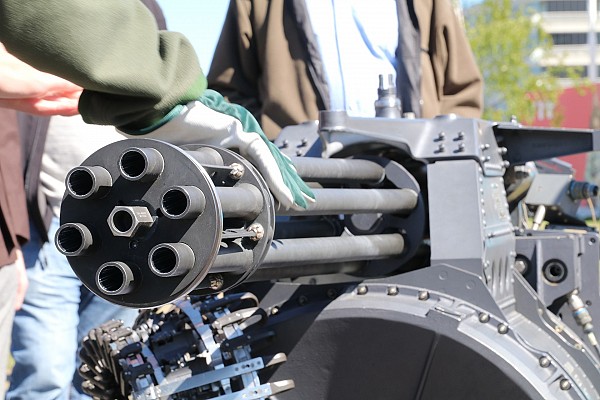IDF to use Vulcan cannons to intercept drones
Eight upgraded systems will return to active service by August as IDF revives decommissioned cannon, including APCs pulled from museums and scrapyards.

The Vulcan is a 20-millimeter Gatling gun, mounted on an armored personnel carrier. It has a firing rate of up to 60 rounds per second—3,600 rounds per minute. Developed in the US, the system entered service in the IDF in 1975, following lessons from the 1973 Yom Kippur War. Over the years, it was upgraded into a version dubbed "Makhbat," which included Stinger missiles and advanced surveillance systems. The Vulcan was retired in 2006 after the Second Lebanon War, as more advanced systems like the Iron Dome took precedence.
Since the start of the Swords of Iron War, which has involved extensive drone and UAV threats across nearly all fronts, the IDF has encountered a challenge that has become common globally: the difficulty of intercepting small, sophisticated drones, especially those entering from Lebanon. These drones often carry out "suicide" missions, crashing into targets and detonating on impact. They fly at low altitudes, making them hard for air defense systems to detect and intercept. The Iron Dome, for example, is designed primarily for rockets and missiles and is less effective against such targets.
Since October 2023, dozens of these UAVs have breached Israeli airspace, some penetrating dozens of kilometers inland. In some instances, they caused casualties—such as the October 2024 attack on the Golani base, in which four soldiers were killed.
 Hezbollah drone
Hezbollah drone
The security establishment has explored several responses: modifying Iron Dome capabilities, deploying fighter jets and helicopters, and employing Rafael's "Iron Beam" laser system, which is expected to become operational soon. However, these measures either offer only partial solutions or are too costly to maintain over time.
To bring the Vulcan back online, the IDF retrieved old APCs from dusty warehouses and scrapyards - including from the Hazerim Museum - and refurbished them. The project is led by the Tamar company, which carried out repairs and modifications and is also training IDF soldiers in operating the system.
Each Vulcan round contains approximately 70 grams of explosives and is designed to detonate mid-air if it misses its target, to minimize the risk of collateral damage or harm to IDF troop assembly areas.
The military is currently working to coordinate all its aerial interception systems to achieve optimal efficiency in countering drones. However, a final decision has yet to be made on which IDF unit will operate the Vulcan systems.
In a statement, the IDF said: "The Air Force is intensifying its efforts to defend the country's skies against a range of threats. During the war, the corps has already integrated and continues to integrate additional capabilities to expand its operational response. For security reasons, we cannot provide details regarding the establishment of combat units or the integration of specific capabilities."
1 comment:
Old tech is not necessarily bad tech. The US Navy uses a pretty much identical system for close-in ship defense against cruise missiles and aircraft. Throw a LOT of lead into the air close to your target and you will probably bring your target down.
Post a Comment